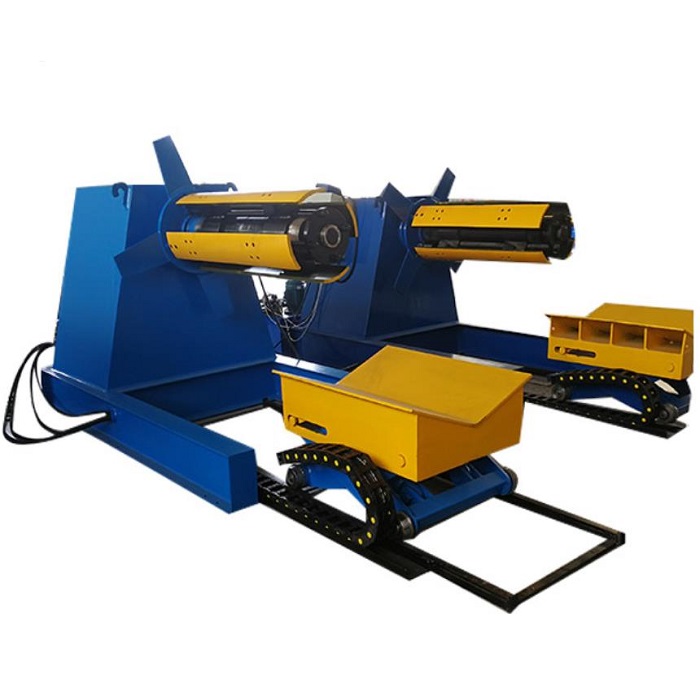roof roll forming machine
The Innovative World of Roof Roll Forming Machines
In the realm of construction, efficiency and precision are paramount. One of the critical tools that facilitate these elements is the roof roll forming machine. This advanced equipment has transformed the manufacturing of roofing materials, making it not only faster but also more cost-effective and environmentally friendly.
Understanding Roof Roll Forming
Roof roll forming involves the continuous bending of metal sheets into specific profiles and shapes for roofing. This process is carried out by a specialized machine that systematically forms flat sheets of metal into panels that are used in roofs, offering durability and aesthetic appeal. The most common materials used in this process are galvanized steel, aluminum, and sometimes copper, which provide a blend of strength and lightweight properties.
The roof roll forming machine typically consists of several key components a decoiler, a feeding mechanism, a forming station, and a cutting station. The decoiler unwinds the metal coil, while the feeding mechanism adjusts the coil’s position. The forming station is where the actual shaping occurs, with rollers gradually bending the metal into the desired profile. Finally, the cutting station trims the formed panel to the specified lengths, ready for installation.
Advantages of Roof Roll Forming Machines
1. Efficiency One of the most significant advantages of roof roll forming machines is their efficiency. These machines can produce long lengths of roofing materials in a continuous process, dramatically reducing production time compared to traditional methods. This is particularly beneficial in large-scale construction projects where time is money.
2. Cost-effectiveness By producing roofing materials on-site and reducing waste, roof roll forming machines can help lower overall costs. They minimize the need for additional inventory and handling, which is particularly advantageous for contractors and builders managing tight budgets.
roof roll forming machine

3. Customization Modern roll forming machines offer great versatility in terms of design. They can produce various profiles with different shapes, sizes, and thicknesses. This ability to customize allows architects and builders to meet specific design requirements and preferences without the constraints typically associated with off-the-shelf products.
4. Durability The materials formed with roof roll forming machines are often stronger and more resistant to environmental challenges, such as wind, rain, and snow. The precise manufacturing process ensures that the end products have consistent quality, which is crucial in ensuring longevity and reducing maintenance costs.
5. Sustainability As the industry moves towards more sustainable practices, roof roll forming machines play a vital role. The efficient use of raw materials reduces waste, and many of the metals used can be recycled, aligning with green building standards. This makes them an eco-friendly choice for modern construction.
The Future of Roof Roll Forming Technology
The future of roof roll forming machines appears bright as technology continues to evolve. Recent advancements in automation and computer-aided design (CAD) allow for more precise production and easier integration into building projects. Moreover, the advent of Industry 4.0 technologies, including the Internet of Things (IoT), is beginning to enhance machine performance, predictive maintenance, and overall operational efficiency.
Additionally, as trends in building design lean towards more sustainable and innovative solutions, the demand for customizable roofing options will likely increase. Roof roll forming machines are well-positioned to meet these changing demands, ensuring that they remain a vital tool in the construction industry.
Conclusion
In conclusion, roof roll forming machines are a testament to the innovation that drives the construction industry forward. Their efficiency, cost-effectiveness, durability, and customization capabilities make them indispensable in today's market. As technology continues to advance, these machines will undoubtedly play a critical role in shaping the future of roofing solutions, contributing to more sustainable construction practices and better-designed buildings. As builders and architects embrace these advancements, they can look forward to not only meeting the current demands but also paving the way for a more innovative future in architecture and construction.
-
Roof Panel Machines: Buying Guide, Types, and PricingNewsJul.04, 2025
-
Purlin Machines: Types, Features, and Pricing GuideNewsJul.04, 2025
-
Metal Embossing Machines: Types, Applications, and Buying GuideNewsJul.04, 2025
-
Gutter Machines: Features, Types, and Cost BreakdownNewsJul.04, 2025
-
Cut to Length Line: Overview, Equipment, and Buying GuideNewsJul.04, 2025
-
Auto Stacker: Features, Applications, and Cost BreakdownNewsJul.04, 2025
-
Top Drywall Profile Machine Models for SaleNewsJun.05, 2025








